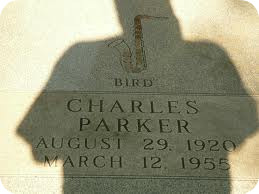main: August 2010 Archives
As far as I know, this is the first time I've been quoted in Magyar. It's a blurb on the back of the Hungarian edition of Jeroen de Valk's Chet Baker: His Life and Music. That invaluable book is also available in English.
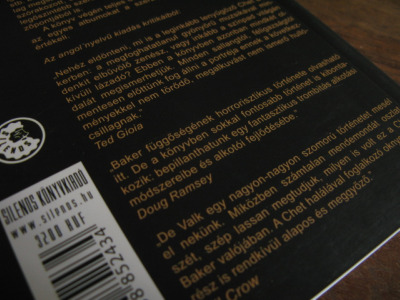
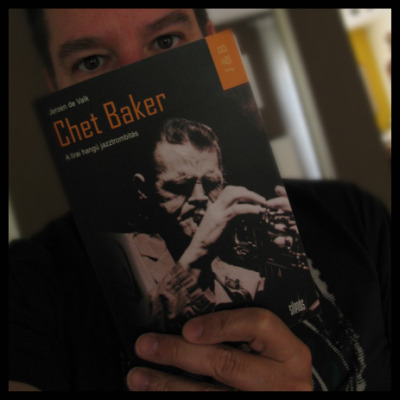 Thanks to photographer Paolo Gant (behind the book) for sending the pictures. Gant captured stunning images of Baker not long before the trumpeter's death in 1988. You can see a few of them, prominently copyright-protected, at his gallery's website.
Thanks to photographer Paolo Gant (behind the book) for sending the pictures. Gant captured stunning images of Baker not long before the trumpeter's death in 1988. You can see a few of them, prominently copyright-protected, at his gallery's website.
All of that is a perfectly good excuse to hear and see Baker in Stockholm on his 1983 tour with Stan Getz, Jim McNeely, George Mraz and Victor Lewis. Getz all but owned "Dear Old Stockholm;" he's the one who recorded the traditional Swedish song in 1951 and made it a jazz standard. This night, though, he presented the melody and gave Chet the solo. And what a solo.
This is Charlie Parker's 90th birthday. In observance, the German trumpeter, teacher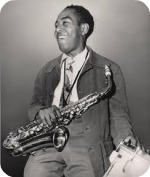 and indefatigable blogger Bruno Leicht posted an entry tracing the evolution of Parker's "Ko-Ko" from its roots in Ray Noble's "Cherokee." In his introduction, Bruno writes:
and indefatigable blogger Bruno Leicht posted an entry tracing the evolution of Parker's "Ko-Ko" from its roots in Ray Noble's "Cherokee." In his introduction, Bruno writes:
...Ray Noble had no idea, but this piece seemed to be extra-created for an ingenious improvisor like Bird. And it really became his leitmotiv through the years, from 1939 on. He owned it so to speak, and he took it to his grave. No one, not even the unique trumpet virtuoso Clifford Brown, could play on those changes as convincingly as the one and only Bird.
Leicht follows with a series of 20 MP3 recordings of "Cherokee" and "Cherokee" variants, from Noble's 1939 recording through many by Parker with his own groups, Parker with Nat Cole, Parker with Stan Kenton, one by Don Byas, one by Benny Goodman and two by Clifford Brown and Max Roach. The MP3-fest ends in 1958 with Roach's quintet featuring Kenny Dorham. After listening to all of it, I am left invigorated, in awe of Bird all over again and with "Cherokee" changes embedded in my brain. Leicht also links to Marc Myers' five-part JazzWax interview with Parker enthusiast Phil Schaap (scroll down to find it).
It's a lot of "Cherokee," a lot of Bird, a lot of work by Bruno, and a fascinating reading and listening experience. To take the ride, go here.
For reasons that cannot be fully explained or quantified, some of the most personal soloists in jazz remain out of the spotlight despite their accomplishments. There is no better example in modern jazz than the trumpeter Johnny Coles (1926-1997), an insiders' favorite barely known to the general public.
A native of Philadelphia, a contemporary of Jimmy Heath, Clifford Brown, John Coltrane 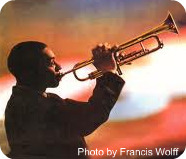 and Benny Golson, Coles never became a leader except on odd jobs and record dates, but he worked for some of the most famous leaders of his time. During his career he played with, among others, Tadd Dameron, James Moody, Herbie Hancock, Ray Charles, Duke Ellington and Gil Evans. Evans framed Coles' solos in shimmering orchestrations on several albums.
and Benny Golson, Coles never became a leader except on odd jobs and record dates, but he worked for some of the most famous leaders of his time. During his career he played with, among others, Tadd Dameron, James Moody, Herbie Hancock, Ray Charles, Duke Ellington and Gil Evans. Evans framed Coles' solos in shimmering orchestrations on several albums.
In a labor of love years in the making, Donald Frese—a frequent and knowledgeable Rifftides commenter—gives Coles his due in a new web discography that documents his major recordings beginning with Bull Moose Jackson in 1951 and ending with Geri Allen in 1996. From Frese's introduction:
Coles often said that Miles Davis was the trumpet player he most admired. Steve Voce, in Coles' obituary, wrote: "Johnny Coles would perhaps have been regarded as one of the jazz greats had he not been so close to Miles Davis in sound and style. Both Coles and Davis had the ability to express themselves powerfully using a minimal number of notes. The similarities clouded the fact that Coles' inventions were completely original and that he barely borrowed." And they both had their own distinctive cries and a certain dryness of sound. Gil Evans was probably Coles' greatest champion and the first to fully utilize his talent.
One does not think of Evans, like Duke Ellington, writing and arranging with the sounds of the men in his orchestra in mind, with the exception of his notable collaborations with Davis and the pieces that featured Coles. It is hard to imagine the compositions "Sunken Treasure" or "Zee Zee", or the arrangements of "Django" and "Davenport Blues" without Coles. Gil wrote the following about Coles in the liner notes to the Artists House LP, Where Flamingos Fly: "Johnny Coles is right in the be-bop era, part of the be-bop happenings and all that, but at the same time he had a great lyric sense and the main reason he could indulge in it is because he's got a great tone. He can hold a tone. When you can hold a tone, then you can take advantage of it. There's hardly anyone else who can do what he can do."
To visit the Johnny Coles discography, go here.
There is precious little video of Coles performing, evidently none with Evans. He is featured with the Mingus sextet in Norway and Sweden in the excellent Jazz Icons DVD Charles Mingus Live In '64. Here he is (the good guy in the white hat) on flugelhorn with the Count Basie band under the direction of Thad Jones. This was made in Japan, probably in 1985. Unfortunately, whoever supplied this clip to YouTube allowed the picture and sound to be out of synchronization. If it bothers you, you can always close your eyes and just listen.
Here, synchronization is no problem. Coles is at the helm of his own ship in the title track of his 1963 Blue Note album Little Johnny C. He solos between alto saxophonist Leo Wright and tenor saxophonist Joe Henderson. The rhythm section is Duke Pearson, piano; Bob Cranshaw, bass; and Walter Perkins, drums.
Johnny Coles, admired and loved by his colleagues for the warmth of his playing, now getting posthumous attention in Don Frese's discography.
Further evidence has come in verifying the value of that cache of previously unheard recordings in the Savory Collection at the National Jazz Museum in Harlem. Proof is posted on Newsweek's web edition—tantalizing solos from the late 1930s and early '40s by Mildred Bailey and Jack Teagarden; Lester Young with Count Basie; Roy Eldridge; Herschel Evans; Benny Goodman; Bobby Hackett; Lionel Hampton; and the John Kirby Sextet. To read the Newsweek story and hear the audio clips, go here.
Just for fun, here's a later edition of the Kirby sextet with (left to right on your screen) Charlie Shavers, Sid Catlett, Charlie Holmes, John Kirby, Buster Bailey and Billy Kyle. This is from a 1947 move, Sepia Cinderella.
For previous Rifftides items about the Savory collection at the National Jazz Museum, see the August 19 and August 22 posts,
Deadlines are stacking up around here like cordwood or like the piles of CDs I haven't heard. I have mixed feelings about deadlines. On the one hand, I'd like to avoid them. On the other, they help make it possible to meet certain commitments; feeding the family, for example. For the next few days while I chop away, posting will be intermittent and may lack the customary Rifftides profundity.
deadlines. On the one hand, I'd like to avoid them. On the other, they help make it possible to meet certain commitments; feeding the family, for example. For the next few days while I chop away, posting will be intermittent and may lack the customary Rifftides profundity.
A deadline is negative inspiration. Still, it's better than no inspiration at all.—Rita Mae Brown
Call me a braggart, call me arrogant. People at ABC (and elsewhere) have called me worse. But when you need the job done on deadline, you'll call me.—Sam Donaldson
I love deadlines. I like the whooshing sound they make as they fly by.—Douglas Adams
The natural urge when running a distance is to push harder and finish sooner—to race against time. Every second behind a deadline is a little defeat.—Joe Henderson (the runner, not the tenor player)
In the meantime, here is interesting modish playing by Jeremy Pelt, flugelhorn and trumpet; J.D Allen, tenor saxophone; Dwayne Burno, bass; and Gerald Cleaver, drums. The video was made, evidently recently, at the Paris restaurant Duc des Lombards. YouTube did not supply the name of the tune. You may give it a title of your choice.
Many music lovers intrigued by the National Jazz Museum's collection of newly discovered recordings wonder when they will be able to hear more than the samples on the museum's website. Under current law, there is little likelihood that the music will be generally available in most of our lifetimes. That will  change only if Congress loosens copyright restrictions. As an editorial in today's New York Times explains,
change only if Congress loosens copyright restrictions. As an editorial in today's New York Times explains,
Copyright laws are designed to ensure that authors and performers receive compensation for their labors without fear of theft and to encourage them to continue their work. The laws are not intended to provide income for generations of an author's heirs, particularly at the cost of keeping works of art out of the public's reach.
The Savory collection, like other sound recordings made before 1972, is covered by a patchwork of state copyright and piracy laws that in some cases allow copyrights to remain until the year 2067.
The editorial goes on to urge Congress to create exceptions in cases like those of many of the recordings in the Savory collection. To read all of the Times opinion piece, go here.
It makes sense that if slackening the copyright leash on a work of art causes no financial harm to its creator, the work should be made available to the public. If those "new" solos by Lester Young and Coleman Hawkins are as stunning as the few people who have listened to them say they are, let us hear them.
The government of France generated a storm late last week when news broke of its expulsion of Gypsies to Romania and Bulgaria. President Nicolas Sarkozy defends the policy as part of his administration's drive for law and order. Critics say that the dismantling of Gypsy camps and the first waves of deportations of Roma people are human rights violations. They charge that the sweep is a cover to distract attention from the ruling party's recent election defeats and accusations of campaign fund-raising violations. For an article recapping the situation, go here.
go here.
Whatever the facts and claims in this latest chapter of the ancient saga of the Roma, the plight of the Gypsies has generated renewed attention to a Gypsy who has been dead for nearly 60 years. Django Reinhardt may be the best-known Gypsy ever to live in France. Certainly, he was the most famous French jazz musician of the 1930s and a guitarist whose legacy includes dozens of 21st century bands modeled on his Quintet of the Hot Club of France. Here is a rare clip of Django and the quintet, evidently from a promotional film.
The Rifftides archive piece below is from May 15, 2006. It includes links to a site that streams many of Django's recordings and to a Reinhardt CD set.
.DjangoDjango Reinhardt died on this date in 1953. He was forty-three years old. Reinhardt melded jazz and the wild élan of the gypsy music he grew up with in Belgium and France. He began to be noticed in 1930 when he was twenty. By the mid-1930s he, violinist Stephane Grappellii and the Quintet of the Hot Club of France were sensations of Europe. By the end of the decade Reinhardt was also working and recording with Benny Carter, Coleman Hawkins, Dickie Wells, Rex Stewart and other leading American jazzmen.
A few of his compositions--"Nuages," "Djangology," "Manoir de Mes Reves"-- are in the basic repertoire. He was memorialized by John Lewis with one of the greatest jazz compositions, "Django." The spirit and style of Reinhardt's playing influenced innumerable guitarists, and several groups have patterned themselves on the Quintet of the Hot Club of France, but there has never been anyone like Django. If you need a reminder of or an introduction to his artistry, go to redhotjazz.com, scroll down to "Oh, Lady Be Good" and hear the joy Reinhardt and Grappelli generated shortly after they found each other in 1934. The site offers thirty-eight other QHCF tracks as RealPlayer downloads (complete recordings, not mere samples). This four-CD set at a bargain price is a fine survey of Reinhardt with and apart from the QHCF
Thanks to Bill Vitka for alerting Rifftides to a BBC music-and-slide show of pictures by the master photographer who died over the weekend. The production lasts less than three minutes, but it includes some of the major works in Leonard's portfolio. To see and hear it, go here.
 This a couple of days old, but in case you missed the news of the unearthing and restoration of a cache of important recordings, see this New York Times article about the National Jazz Museum. Then read this followup. It will probably be a long time before the trove of new old music by Lester Young, Count Basie, Benny Goodman and others can make its way to the public in commercial albums.
This a couple of days old, but in case you missed the news of the unearthing and restoration of a cache of important recordings, see this New York Times article about the National Jazz Museum. Then read this followup. It will probably be a long time before the trove of new old music by Lester Young, Count Basie, Benny Goodman and others can make its way to the public in commercial albums.
In the meantime, the museum offers a few tantalizing samples.
Herman Leonard died last Saturday in Los Angeles at 87. A master of backlighting in smoky atmospheres, and of meticulous darkroom wizardry, Leonard photographed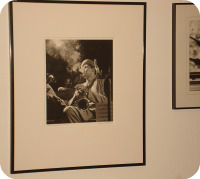 images that caught the mood of music-making by some of the most significant jazz artists of the 20th century. For an obituary, see the New Orleans Times-Picayune's website. Leonard lived and worked in New Orleans for more than a decade until Hurricane Katrina ruined his house and studio and he moved to L.A.
images that caught the mood of music-making by some of the most significant jazz artists of the 20th century. For an obituary, see the New Orleans Times-Picayune's website. Leonard lived and worked in New Orleans for more than a decade until Hurricane Katrina ruined his house and studio and he moved to L.A.
 On a wall of my music room is a prized signed print of Leonard's shot of Dexter Gordon at the Royal Roost in New York at the height of the bebop era. The picture was widely known as an album cover, but like much of Leonard's early work created for utilitarian purposes, it took on larger fame as a symbol of the spirit of jazz, and as a collectors' treasure.
On a wall of my music room is a prized signed print of Leonard's shot of Dexter Gordon at the Royal Roost in New York at the height of the bebop era. The picture was widely known as an album cover, but like much of Leonard's early work created for utilitarian purposes, it took on larger fame as a symbol of the spirit of jazz, and as a collectors' treasure.
Herman Leonard, RIP.
With too many Rifftides posts lately about the deaths of prominent figures in jazz, it was good to hear from someone who documents the work of young musicians. The message came from Randy Cole in Montreal.
I've been making a number of short films, and I wanted to share one with you. Most of my films thus far feature two wonderful Montreal musicians, Al McLean on sax and Kevin Dean on trumpet.
Mr. Cole's communique contained a link to one of those films. I was unfamiliar with him or the musicians in his feature. I am glad to know about them, as Rifftides readers may be. McLean's and Dean's rhythm section is bassist Morgan Moore and drummer Hans Verhoeven. Following a spoken word section and an impressive unaccompanied interlude by McLean, the quartet plays Dizzy Gillespie's "Birk's Works," with comments interspersed.
Let's hear it for Canada.
There are several other clips of Randy Cole's film work on this You Tube page.
In a world darkened by ethnic conflicts that tear nations apart, Canada stands as a model of how people of different cultures can live and work together in peace, prosperity, and mutual respect.—Bill Clinton
Canada is the linchpin of the English-speaking world.—Winston Churchill
Canada is a country whose main exports are hockey players and cold fronts. Our main imports are baseball players and acid rain.—Pierre E. Trudeau
Abbey Lincoln died today in New York. The singer and actress was 80 years old. After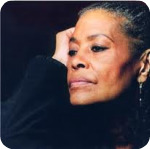 meeting Max Roach when he played drums on one of her record sessions in 1957, Ms. Lincoln came under his sway in her approach to music and in uncompromising civil rights activism. She and Roach married in 1962 and divorced eight years later, but his influence steered her toward a later career as a song writer and recording artist with a string of successful albums. For a lengthy review of her life, see Nate Chinen's obituary in The New York Times.
meeting Max Roach when he played drums on one of her record sessions in 1957, Ms. Lincoln came under his sway in her approach to music and in uncompromising civil rights activism. She and Roach married in 1962 and divorced eight years later, but his influence steered her toward a later career as a song writer and recording artist with a string of successful albums. For a lengthy review of her life, see Nate Chinen's obituary in The New York Times.
These two video clips illustrate Abbey Lincoln's transformation. The first is from the 1956 film The Girl Can't Help It, which also featured Jane Mansfield. The second is a piece from Roach's Freedom Now Suite, performed on German television in the early 1960s with his quartet: pianist Coleridge-Taylor Perkinson, bassist Eddie Khan and tenor saxophonist Clifford Jordan.
Ms. Lincolns' CD Abbey Sings Abbey summarizes her later work as composer and vocalist.
The average jazz listener—whoever that might be—may never give a thought to how his favorite musicians learned their art. There was a time, long past, when most professional jazz artists reached proficiency through on-the-job training. Music departments in institutions of higher education took decades to recognize jazz as a serious branch of music. Older jazz players who majored in music can tell you stories of being disciplined or, in extreme cases, thrown out of school for jamming in practice rooms. That changed. I haven't done a survey, but my educated guess is that the majority of professional jazz musicians at work today studied in a college or university 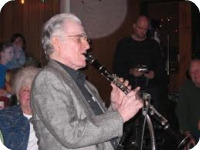 jazz program. One of the key agents of the change was Leon Breeden of North Texas State University. Breeden died yesterday. He was 88. Here's the beginning of a 1979 Texas Monthly piece I wrote about him.
jazz program. One of the key agents of the change was Leon Breeden of North Texas State University. Breeden died yesterday. He was 88. Here's the beginning of a 1979 Texas Monthly piece I wrote about him.
Fifteen or twenty years ago it would have been unthinkable for a major jazz leader to select key players from recent college graduates. But the quality of musicians on the college level has improved so dramatically in recent years that in the mid-seventies Woody Herman hired his entire rhythm section right out of North Texas State University in Denton. North Texas State's lab band progam, under the direction of Leon Breeden, led the way in showing that properly trained and disciplined youngsters can produce superior music.
Jazz education has been a part of the NTSU music program for 32 years, and although other universities have occasionally produced impressive student bands over the past couple of decades, Breeden's have been consistently noteworthy for their polish, unity and flair. His understanding of the requirements of jazz ensemble playing, and his ability to make his students understand them, have resulted in playing that has aroused envy in professional musicians.
To read all of that 31-year-old article, go here. For The Dallas Morning News obituary of Breeden, go here.
This video, posted today by an admirer, presents a summary of Breeden's career and importance, with photographs and musical evidence of what he achieved. It begins with his own words.
Jessica Williams, Touch (Origin). It would have been difficult to imagine that Williams might exceed what she achieved in her 2009 solo concert recording The Art of the Piano. Yet, less than a year later she returned to Seattle's Triple Door and gave this recital glowing with her customary pianistic dazzle and a nearly Brahmsian gravity leavened with wit. The album's title implies more than the exquisite way she addresses the instrument's keyboard and pedals—the pianist's equivalent of tone. She demonstrates that aspect of her  musicality with understated drama in the album's first piece, "I Loves You Porgy." Near the end, following a passage drenched in blues feeling, she releases a freshet of quiet 32nd notes at the very top of the keyboard where only the best pianos don't sound tinny. The Triple Door's Steinway D is silvery in its upper reaches. Williams's control is so exacting that despite the speed with which the stream goes by, each tiny note has its own clarity, its own expressiveness. Contrasted with the solidity of the bass note pattern in her left hand, the effect is mesmerizing; sparkles of sunlight on clear water rushing over rocks. When the piece ends, the audience does something unusual in these days of exhibitionist stomping and whistling at jazz performances. It sits quietly for a full four seconds before someone starts to applaud.
musicality with understated drama in the album's first piece, "I Loves You Porgy." Near the end, following a passage drenched in blues feeling, she releases a freshet of quiet 32nd notes at the very top of the keyboard where only the best pianos don't sound tinny. The Triple Door's Steinway D is silvery in its upper reaches. Williams's control is so exacting that despite the speed with which the stream goes by, each tiny note has its own clarity, its own expressiveness. Contrasted with the solidity of the bass note pattern in her left hand, the effect is mesmerizing; sparkles of sunlight on clear water rushing over rocks. When the piece ends, the audience does something unusual in these days of exhibitionist stomping and whistling at jazz performances. It sits quietly for a full four seconds before someone starts to applaud.
No, the Williams touch arises from every aspect of her musicality and goes beyond technique into the rarified territory of recognizability. Listeners familiar with her are unlikely to need a CD cover or an announcement to know who is playing. It has to do with the way her left hand voices chords, the characteristic fillip she gives grace notes, the way she floats time without sacrificing swing, her infusion of blues feeling into material that has no formal connection to blues harmonies, her personalization of songs indelibly identified with others. Paying tribute, she takes ownership of Charles Mingus's "Goodbye Porkpie Hat" and John Coltrane's "Wise One." A transformer of standards, Williams enters the landscape of nostalgia with Johnny Green's "I Cover the Waterfront" but manages to also make it an occasion for mild puns and a subtle bow toward Erroll Garner's kind of swing.
Her own compositions enhance the reflective mood of the album. "Soldaji," the title a variation on the Portuguese "saudade," is as expressive of loss and longing as anything by Jobim, Bonfá or Villa Lobos. "Rosa Parks" is the waltz in the collection, with logical if unpredictable chord changes and a soft insistence that suggests its namesake. "Gail's Song" is an after-midnight ballad that might seem patterned on a standard except for its unexpected chromaticisms, deceptively voiced seventh chords, and decorative flourishes that echo Ellington. "Simple Things" is just that, an open, uncomplicated melody in F with a set of changes that makes it easy for Williams to have fun. She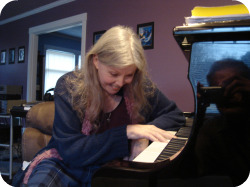 quotes from or alludes to some of her favorite things, including "My Favorite Things," "I'll Never Be the Same," "Along Came Bill," "Some Enchanted Evening," "Mairzy Doats" and Sophisticated Swing," not to mention an assortment of bebop licks. I may have missed a few. The quotes are not the point. The point is that they are not tacked on but fit into the flow of her improvisation so that if you didn't recognize them, it wouldn't matter.
quotes from or alludes to some of her favorite things, including "My Favorite Things," "I'll Never Be the Same," "Along Came Bill," "Some Enchanted Evening," "Mairzy Doats" and Sophisticated Swing," not to mention an assortment of bebop licks. I may have missed a few. The quotes are not the point. The point is that they are not tacked on but fit into the flow of her improvisation so that if you didn't recognize them, it wouldn't matter.
This level of accomplishment must be what Williams was anticipating when she said a few years ago that she felt she was on the verge of a step into "the next zone." If so, the zone is an attractive place for her and her listeners. Williams seems to have worked through a period in which she was thoroughly musical—she has always been that—but not quite at peace with the world or herself. Touch has the air of a woman comfortable with her maturity and relaxed in her expanding musical universe.
People in the jazz community, particularly pianists in awe of Williams's consistency, creativity and constant growth, often discuss why so many critics and the business side of jazz seem deaf to her brilliance. Whatever the reasons, they must be sociological, political or cultural. They cannot be musical, not with her decades of development into an artist who can sit at a piano in a night club and create a masterpiece like Touch.
Dana Hall, Into The Light (Origin). Drummers who flaunt their technique can be enemies of music when their busyness becomes the center-ring distraction in a band. Dana Hall is a busy drummer, but in his case that's a compliment. He accompanies with waves of rhythmic patterns surging and swelling behind, under and around soloists. This 40-year-old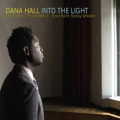 Chicagoan—debuting here as a leader—manages to amalgamate his virtuosity so that he melds into the flow of the soloists' improvisations. That places him in a line of aggressive but accommodating drummers that goes back at least as far Sid Catlett and includes Max Roach, Roy Haynes, Elvin Jones and, more recently, Jeff "Tain" Watts.
Chicagoan—debuting here as a leader—manages to amalgamate his virtuosity so that he melds into the flow of the soloists' improvisations. That places him in a line of aggressive but accommodating drummers that goes back at least as far Sid Catlett and includes Max Roach, Roy Haynes, Elvin Jones and, more recently, Jeff "Tain" Watts.
From the beginning of the album's first piece, Herbie Hancock's "I Have a Dream," Hall dramatically demonstrates his mastery of what might be called integrational drumming. The dynamics of his pops, snaps, cymbal splashes and ingenious divisions of time rise and fall with the intensity of the performance as trumpeter Terell Stafford, saxophonist Tim Warfield, Jr. and pianist Bruce Barth solo. For all its vigor, there is also subtlety in Hall's playing, and in the concepts in the album. Hall's drumming transition from "Conversion Song" into "Orchids" is a case in point. It creates the effect of a two-part suite and sets up bassist Rodney Whitaker's superb solo. The title tune is the shortest in the album and, with the exhilaration of its collective chance-taking, the freest. The longest, "Jabali," combines harmonic freedom, in the Ornette Coleman sense, with traditional swing and a rare instance of silence from Hall while the horns sing his closing melody.
Stafford and Hall are mutual admirers, with cause, and sidemen in one another's bands. Stafford reaffirms here that he is one of the most important trumpeters to emerge in the new century. Warfield, a swaggering tenor saxophonist, doubles on soprano and has fine moments on each horn. Barth, often type-cast as a mainstream post-bop pianist, demonstrates that he can go as far out as Hall, a former aerospace engineer. A member of the faculty of the University of Illinois at Urbana-Champaign, Hall is accomplished in composition and arranging. All of the music on the CD is his except for the Hancock piece, Warfield's joyous "Tin Soldier and Whitaker's "For Rockelle," a ballad based on "My Funny Valentine." Into The Light was released late in 2009. It took me a while to get around to it. I'm glad that I did.
In his few years, Oliver Nelson achieved major success as a composer and arranger in jazz and in the Hollywood studios. His first big band collection, Afro-American Sketches (1961), made it clear that he was an important new talent. His Blues And The Abstract Truth with an all-star septet that included Bill Evans, Freddie Hubbard 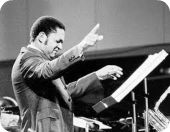 and Eric Dolphy is one of the most significant jazz albums of the second half of the 20th century. A good saxophonist, Nelson blossomed as a writer. His inventiveness, productivity, adaptability and capacity to produce on schedule led him to a career composing for television and movies. He scored, among other programs, 1960s and '70s hits including Ironside, Mr. Broadway and The Six Million Dollar Man. He became wealthy, but was leery of an essentially mercantile pursuit that he feared might sap his creativity. Phyl Garland wrote about Nelson's concern in a November, 1968 article in Ebony magazine.
and Eric Dolphy is one of the most significant jazz albums of the second half of the 20th century. A good saxophonist, Nelson blossomed as a writer. His inventiveness, productivity, adaptability and capacity to produce on schedule led him to a career composing for television and movies. He scored, among other programs, 1960s and '70s hits including Ironside, Mr. Broadway and The Six Million Dollar Man. He became wealthy, but was leery of an essentially mercantile pursuit that he feared might sap his creativity. Phyl Garland wrote about Nelson's concern in a November, 1968 article in Ebony magazine.
He fears that he might become a victim of his own success, for there is the constant lure of the even bigger money to be made by those who join "the club," as that small group of openly commercial but highly solvent Hollywood composers call themselves. "Club" type success is difficult to shun, particularly when Oliver enjoys living as he does, though he has few spare hours to splash around in his own pool, and is equally proud of the home and 22-acre tract he has purchased for his parents on the outskirts of his hometown, St. Louis. He reluctantly admits, "I don't see how I could give it all up," but realizes that his expanding activities have left him little time in which to write music freely, to answer what he calls "this inner voice...something inside that just has to come out."
To read all of the lengthy piece about Nelson, go here. Two years after the article appeared, Nelson was in Germany to conduct his arrangements played by an international ensemble called The Berlin Dream Band. This video from that concert gives a rare opportunity to hear Nelson speak and see him at work in his preferred milieu. The first trumpet soloist is the late Carmell Jones. I am unable to identify the other two. The trumpet section is: Milo Pavlovic (Yugoslavia), Ron Simmonds (Canada), Carmell Jones (USA), Manfred Stoppacher (Austria), Harry Samp (Germany).
Oliver Nelson managed to balance "this inner voice" with work in the studios, but for only a few years longer. He died of a heart attack in 1975 at the age of 43.
Jim Wilke, known worldwide for his Jazz After Hours satellite radio program, also runs a popular weekly broadcast featuring musicians from the Pacific Northwest. He sent this alert about the first program in a new series. It will present music from a major festival that ended last weekend.
Centrum Jazz Port Townsend Festival Big Band next onJazz Northwest
The All Star Festival Big Band is always one of the hits of the annual Jazz Port Townsend Festival. This year's concert lived up to the tradition of mixing top Northwest resident musicians with visiting jazz stars and a sprinkling of guest artists and was conducted by John Clayton. Most of the artists are also members of the faculty for the week-long jazz workshop that precedes the Festival. The concert was recorded for broadcast and will air exclusively (and stream online) on 88.5 KPLU on Sunday, August 8 at 1 PM Pacific Daylight Time. John Clayton led the orchestra and featured in solo turns were trumpet player and vocalist Byron Stripling, composer/arranger Ellen Rowe, singer Saschal Vasandani and drummer Butch Miles and other soloists from the band.
Ingrid Jensen, Jay Thomas and Terell Stafford in a three- way trumpet chase with John Clayton conducting the Festival Band.(Jim Levitt photo)
(For the completists among you: [l to r]
Saxophones: Travis Raney, Alexey Nikolaev, Jeff Clayton, Mark Taylor, Bill Ramsay.
Trombones: Dan Marcus, Wycliffe Gordon, David Marriott, Greg Schroeder (hidden).
Trumpets: Ingrid Jensen, Brad Allison (seated), Jay Thomas, Andy Omdahl (seated), Terell Stafford.
Rhythm section (not seen here): Jon Hansen, piano, Dan Balmer, guitar, Doug Miller, bass, Butch Miles, drums. —DR)
This is the first in a series of concerts from Jazz Port Townsend which will air on Jazz Northwest, Sundays at 1 on 88.5, KPLU. The concerts will be heard at monthly intervals.Jazz Northwest is recorded and produced by Jim Wilke exclusively for KPLU and kplu.org. A podcast of each program is available on the Monday following the airdate at kplu.org.
Okay, okay, it's a plug. Rifftides plugs are strictly based on the merit of the plugees.
The alto saxophonist Lee Konitz's inventiveness and boldness have seldom flagged. As his recent recordings demonstrate, he continues to embrace adventure and risk. If his repertoire is stocked with pieces that he revisits time and again—"All the Things You Are," "I'll Remember April," "Body and Soul," "Just Friends"—Konitz is the epitome 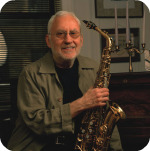 of the jazz soloist who tries never to play anything the same way twice, never coasts on clichés, even his own.
of the jazz soloist who tries never to play anything the same way twice, never coasts on clichés, even his own.
As a listener who has been captivated by Konitz since first hearing his 1949 recordings with Lennie Tristano, I never fail to find him at least interesting. Often, he transmits a sense of challenge and discovery remarkable for an improvising musician in his ninth decade. I may wish that Konitz had retained the skipping lightness and whimsy that characterized his work in the 1950s and well into the '60s. It may not be realistic, however, to think that as an artist deepened his tone and his intellect, youthful spirits would continue to dominate his work.
There is no better example from the latter part of that "early" period than Konitz's 1961 Motion album with bassist Sonny Dallas and drummer Elvin Jones, and few better examples from the '50s, at least on video, than this 1954 performance of "Subconscious-Lee" with his Tristano bandmate Warne Marsh. The rhythm section is pianist Billy Taylor, guitarist Mundell Lowe, bassist Eddie Safranski and drummer Ed Thigpen.
Tom Vitale of National Public Radio put together a report about Konitz that summarizes his career and his present approach. It includes comments from Konitz and bits of his current work. To hear the story, go here and click on "Listen Now." At the end of the text are links to previous NPR pieces about Konitz.
Jazz listeners who derided the sing-along records and TV shows that made Mitch Miller rich and famous in the 1950s and '60s tended to forgive him the shallowness of his pop pap because he played with Charlie Parker. Miller died over the weekend at the age of 99. See Matt Schudel's excellent obituary in The Washington Post.
In addition to his sing-along extravaganzas, Miller produced recordings by singers as various as Johnny Mathis, Hank Williams, Rosemary Clooney, Tony Bennett and Frank Sinatra—during one of the low points of Sinatra's career. Before his career as a pop producer and sing-along specialist, Miller was admired as one of classical music's most accomplished oboists. He appeared in oboe interludes and obbligatos in Parker's album with strings and in a few live appearances with Parker's string ensemble. In this photograph from the 1949 recording session we see Miller with Parker, drummer Buddy Rich, bassist Ray Brown and violinists Max Hollander and Milt Lomask. In this case, Miller is playing English horn.
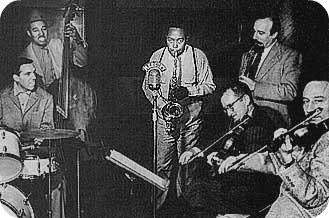
And here he is with Parker in the remarkable "Just Friends," from the Charlie Parker With Strings album. Miller has the oboe interlude between Bird's choruses.
Sing along with this.
(A version of this post that was up for a few hours contained factual errors that fellow blogger Alan Kurtz called to my attention. The errors are gone. Thanks, Alan.—DR)
Arizona's once-open arms close into fist
—Headline, Yakima (Washington) Herald-Republic, 8/3/10
If you live in New York City or are headed there this week, you're in luck. Rebecca Kilgore is in town, sharing a gig at Feinstein's with the tenor saxophonist Harry Allen and  his quartet. I learned of her appearance by way of The Wall Street Journal's WSJ.com, which has a New York Culture section that doesn't show up in the national print edition. Will Friedwald wrote the piece about Kilgore. He underlines the rarity of her appearances in The Apple.
his quartet. I learned of her appearance by way of The Wall Street Journal's WSJ.com, which has a New York Culture section that doesn't show up in the national print edition. Will Friedwald wrote the piece about Kilgore. He underlines the rarity of her appearances in The Apple.
Once you do hear Ms. Kilgore, however, you'll be hooked: With her opulent chops, lighter-than-air style, and, above all, her effortless rhythm, Ms. Kilgore is the living embodiment of the hippest singers of the big band era, like Maxine Sullivan, Mildred Bailey, and Helen Ward. Her partner in time for this three-night stand is saxophonist Harry Allen, a master of ballads and blues who plays so brilliantly behind singers because he essentially is one himself. Ms. Kilgore's intonation has an instrumental perfection to it, while Mr. Allen's tender tenor boasts a warmly human vocalized edge; together they should approach perfection.
True. All true. To read the whole thing and see a terrific performance photograph of Ms. Kilgore, go here. In case you missed the Rifftides review of her triumphant concert with her husband's band at The Seasons earlier this year, go here.
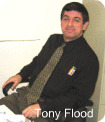 Thanks to Rifftides reader Dave Lull for alerting us to a jazz blog that debuted in early July. Although its name, Tony Flood's House Of Hard Bop, could hardly be more specific, in his first post Mr. Flood opened with a demurer:
Thanks to Rifftides reader Dave Lull for alerting us to a jazz blog that debuted in early July. Although its name, Tony Flood's House Of Hard Bop, could hardly be more specific, in his first post Mr. Flood opened with a demurer:
Hard Bop: the Dominant, Not Sole, Focus Here.
I care a great deal about what came before it, and what came out of it, most of all the remarkable musicians who faced challenges (pardon the euphemism) posed by the British invasion of 1964. "Hard bop" is an abstraction, but if I manage to lead my visitor away from words about it and to the music itself, which my words might as easily dilute as illuminate, he or she will be able to put meat on the literary bones I offer.
That's a good beginning. One of Mr. Flood's early posts is a personalized piece about the little-known pianist Sadik Hakim, whom he knew. To read it, go here and scroll down to July 15.
When you come back (please do), you may care to go to this Rifftides archive piece, then this one, for additional reflections on hard bop.
Mr. Flood—welcome to the neighborhood.
AJ Ads
AJ Blogs
AJBlogCentral | rssculture
Terry Teachout on the arts in New York City
Andrew Taylor on the business of arts & culture
rock culture approximately
Laura Collins-Hughes on arts, culture and coverage
Richard Kessler on arts education
Douglas McLennan's blog
Dalouge Smith advocates for the Arts
Art from the American Outback
Chloe Veltman on how culture will save the world
For immediate release: the arts are marketable
No genre is the new genre
David Jays on theatre and dance
Paul Levy measures the Angles
Judith H. Dobrzynski on Culture
John Rockwell on the arts
innovations and impediments in not-for-profit arts
Jan Herman - arts, media & culture with 'tude
dance
Apollinaire Scherr talks about dance
Tobi Tobias on dance et al...
jazz
Howard Mandel's freelance Urban Improvisation
Focus on New Orleans. Jazz and Other Sounds
Doug Ramsey on Jazz and other matters...
media
Jeff Weinstein's Cultural Mixology
Martha Bayles on Film...
classical music
Fresh ideas on building arts communities
Greg Sandow performs a book-in-progress
Harvey Sachs on music, and various digressions
Bruce Brubaker on all things Piano
Kyle Gann on music after the fact
Greg Sandow on the future of Classical Music
Norman Lebrecht on Shifting Sound Worlds
Joe Horowitz on music
publishing
Jerome Weeks on Books
Scott McLemee on books, ideas & trash-culture ephemera
theatre
Wendy Rosenfield: covering drama, onstage and off
visual
Public Art, Public Space
Regina Hackett takes her Art To Go
John Perreault's art diary
Lee Rosenbaum's Cultural Commentary
